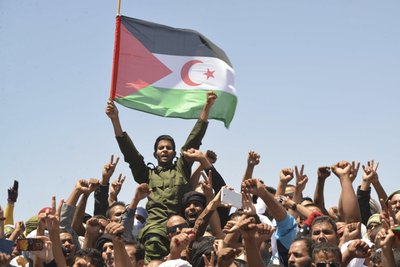At the world’s edge: Western Sahara

Oct 16, 2018
Originally published 11 October 2018
Have you ever stared long enough at a map that you notice those weird blotches and dotted lines? These are likely disputed territories, where one or more countries claim a piece of land as part of their country. They may also be unrecognized countries, which have their own government and armed forces, yet are claimed by another country. “At the world’s edge” will look at some of these contested regions and examine them to better elucidate why these international irregularities exist and why they endure.
On the northwestern edge of Africa is a small region called Western Sahara, which most people never heard of. It is understandable why this would be the case, since it is geographically isolated from the rest of the world by that great desert from which it gets its name.
Western Sahara, depending on whom you ask, is either an independent Arab country called the “Sahrawi Arab Democratic Republic,” or constitutes part of Morocco, as that nation’s “Southern Provinces.”
This strange situation came about (as many on the African continent have arisen) from colonialism. This territory was initially a colony of Spain, (one of that country’s few and sparsely populated colonies after the collapse of its New World empire in the 1800s,) and, unsurprisingly, it was called “Spanish Sahara.” The Spanish generally neglected this colony, since it offered few resources they could have used.
Spain, under the dictatorship of Francisco Franco, held on to Spanish Sahara long after most of Africa had been decolonized. It was not until 1975, with the demise of Franco himself, that the Spanish government formally abandoned the territory. Afterwards, it became disputed between two neighboring nations, Mauritania to the south, and the aforementioned Morocco to the north.
Not long after independence, these two countries divided the territory, now simply known as Western Sahara, amongst themselves. Unbeknownst to them, however, there was a small revolutionary group called the Polisario Front, which engaged in guerilla warfare. Mauritania withdrew from the region, allowing Morocco to claim its portion.
The Polisario Front continued its war for independence, ceasing only briefly in the 1990s when the United Nations attempted to broker a peaceful solution to the conflict. Morocco filibustered, frustrated referendums and sent more troops to occupy Western Sahara.
Today, the situation has not improved. Morocco continues to occupy Western Sahara, treating it, in some respects, as one of its provinces and in others as an occupied foreign country. The Polisario Front is still active, waging an underground campaign of resistance and sabotage. Because of its left-wing politics, the Polisario Front has led an informal front against Al Qaeda and other terrorist groups at the same time as it struggles against Moroccan forces, according to BBC News.
Why would Morocco continue to occupy this country if it was such a burden? In short, it has oil fields and phosphate mines. Moroccan companies have engaged in the exploitation of these resources since they were discovered in the early 2000s.
Sadly, no international negotiations have so far been able to secure to Western Sahara independence or self-government. It could remain an occupied land long into the future, or be fully absorbed into Morocco, although it seems that the latter option is slightly unrealistic.











